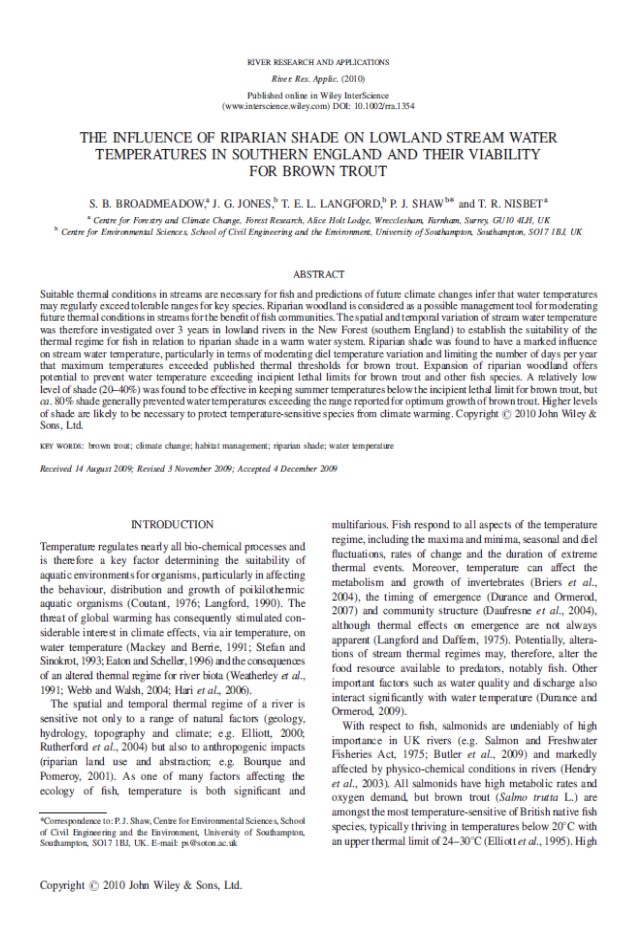Summary
Planting trees along stream banks could play an important part in protecting sensitive fish such as salmon and trout from rising temperatures as the climate warms. Results from an ongoing study in the lowland streams of the New Forest suggest that riparian shade can prevent summer water temperatures exceeding dangerous limits.
Research Objectives
Water temperature in shaded and unshaded reaches of three streams across the New Forest was monitored at 15 min intervals.
The riparian shade at each site was characterised using hemi-spherical photographs, aerial photographs and GIS software.
The site shade parameters were used to investigate the influence of riparian shade on the spatial and temporal variation of thermal regime.
Findings and Recommendations
Water temperature fluctuates through the day in small, rain-fed streams such as those of the New Forest. The study found that riparian woodland had a marked effect on the water temperatures, with daily peaks in water temperature typically 5 degrees cooler in shaded reaches than open water. This was enough to significantly reduce the number of days on which stream water temperature exceeded critical thresholds for trout.
Critically, the study indicates that riparian shade of about 20% canopy cover for at least 500 m in small, rain-fed streams could be effective in preventing current summer maximum water temperatures from exceeding potentially life threatening levels for native cold-water fish. However, higher proportions of riparian woodland are likely to be needed to address future climate warming.
The results illustrate how the riparian shade can be managed to provide essential cool-water refugia in the streams for the benefit of fish such as salmon and trout.

